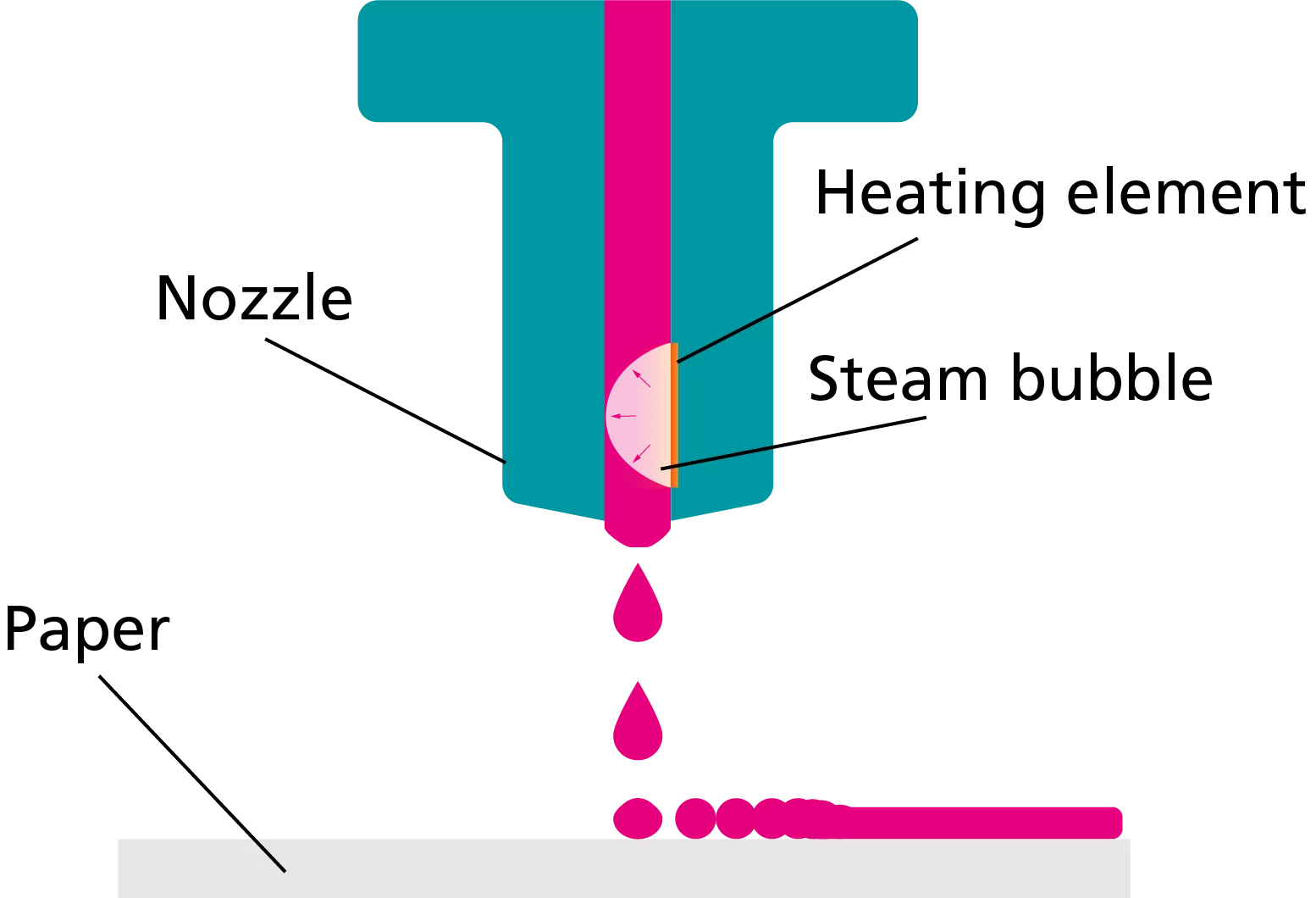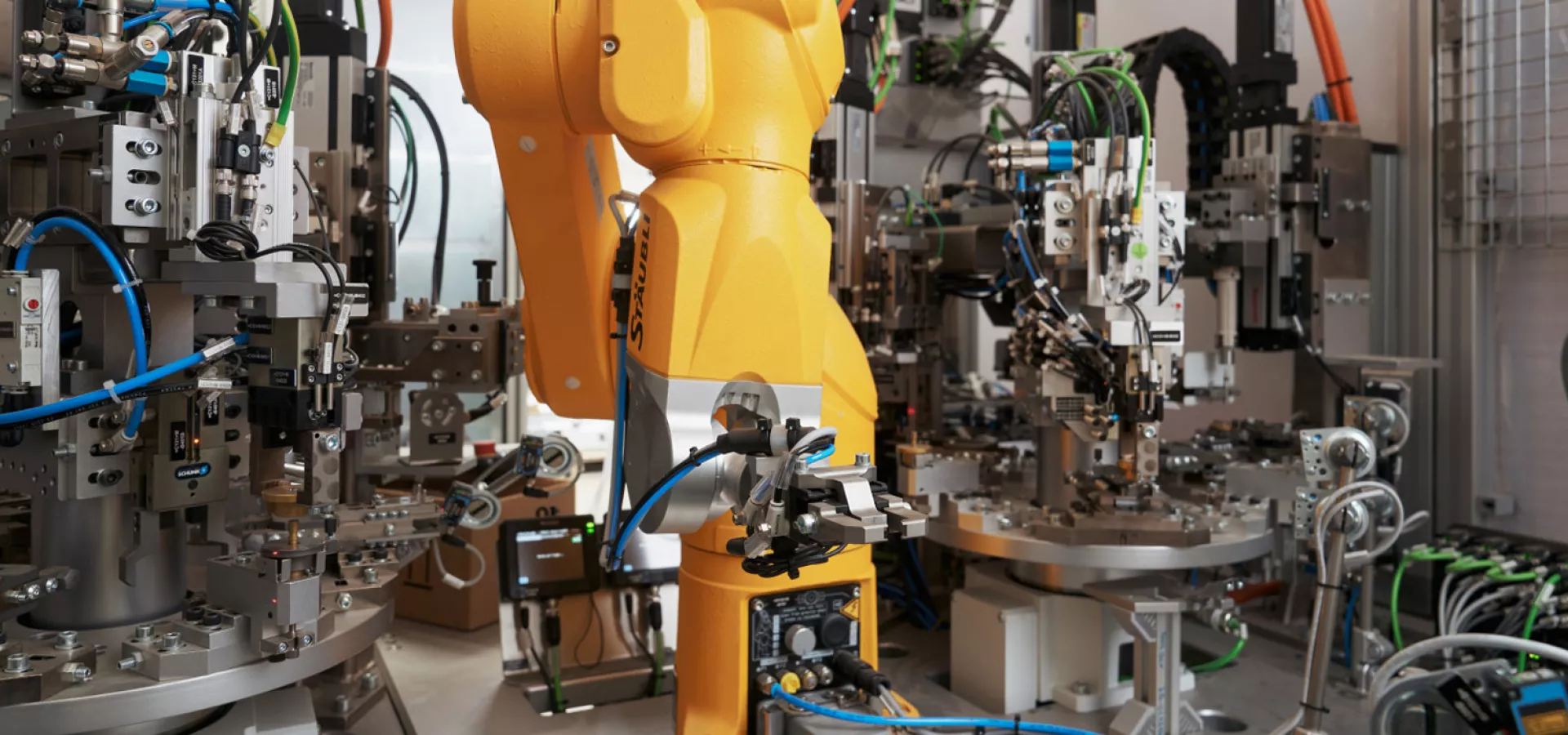
Thermal InkJet - inkjet printing with the effect of heat
The thermal inkjet process is a variant of inkjet printing that is used in industry, among others, to transfer a print template quickly, precisely and without contact onto a carrier medium. Thermal inkjet is a drop-on-demand printing process in which - as the name suggests - ink drops are only ejected from the nozzles when they are actually required according to the print specification. An alternative to thermal inkjet is the piezo process. However, while the ink drops in the piezo process are ejected from the nozzle according to the principle of mechanical displacement, thermal inkjet works by heating the ink inside the nozzle.
How does Thermal Inkjet work?
The nozzle of a thermal inkjet printer contains heating elements that can reach temperatures of up to 300°C. The heating elements heat the ink inside the nozzle to above its boiling point. The heating elements heat the ink inside the nozzle to above its boiling point. When the ink changes its aggregate state and enters the gaseous state, the volume expands and high pressure is generated. This pressure in turn ensures that the ink droplet is forced out of the nozzle and the ink lands accordingly on the substrate. The heating element then regulates the temperature back down and the ink returns from a gaseous to a liquid state. This changes the pressure ratio again and the resulting negative pressure ensures that new ink is automatically sucked into the nozzle.
The thermal inkjet process was developed relatively simultaneously by HP and Canon in the 1980s. In the meantime, many other manufacturers of inkjet printers have joined them, and thermal inkjet has become the modern standard in many cases, especially in the industrial sector.

What are the advantages of Thermal Inkjet?
As a variant of the inkjet printing process, thermal inkjet is particularly impressive due to the speed and precision of the results. Due to the high resolution, for example, the depth of field is very convincing when printing light images and photographs on chip cards. The fact that several thousand nozzles can be linked together in modern thermal inkjet printers results in a very short processing time. In addition, the technology behind thermal inkjet is now much cheaper to produce than printheads that use the piezo method. The components are not only smaller, but also static and therefore less susceptible to defects. In addition, the maintenance requirements for thermal inkjet are significantly lower than for other printing processes. On the other hand, however, it must be noted that specific criteria must be taken into account when selecting the ink used. For example, they must have a relatively high heat resistance. The composition of the ink from different pigments must also be precise, because individual pigments can influence the evaporation process (boiling point) in thermal inkjet.


